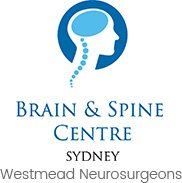Spinal Trauma
The spinal cord is a bundle of nerves that extends from the base of your brain down to your lower back. These nerves are responsible for the conduction of signals from your brain to the rest of your body to help in its various functions. It is protected by a bony canal formed by vertebrae arranged one above the other as any injury to these nerves can disrupt normal functions. Spinal cord injuries may occur due to:
- Direct trauma to the spinal cord caused by motor vehicle accidents, falls, assault (gun shot and knife wounds) or during sports or recreational activities
- Diseases in the surrounding tissues such as arthritis, osteoporosis, bone fracture or dislocation, inflammation of spinal cord and cancer, which can compress the nerve fibres
Damage to the nerves can be complete, where there is complete loss of sensation and function (paralysis) in the regions supplied by the nerves below the level of injury, or incomplete, where there is limited sensation and movement in the levels below the injury. Depending on the region and extent of injury, symptoms can be seen immediately or develop gradually, and may include loss of sensation, loss of movement, spasm and pain to the region supplied by the injured nerve, loss of bowel or bladder control, and changes in sexual function. The emergency signs may include difficulty in balance, weakness, numbness or paralysis and difficulty with breathing.
Your doctor will review your history and perform a thorough physical examination for sensory function and movement. Imaging tests such as X-ray, myelogram (X-ray of the spine combined with contrast dye), CT scan or MRI scans may be ordered to evaluate conditions such as fractures, herniated disc, swelling, compression of the spinal cord and blood clots. Nerve conduction tests and electromyography (evaluates the health of muscles) may also be ordered.
Spinal cord damage cannot be reversed, but early treatment is encouraged for the best outcomes. Your doctor may encourage you to wear a rigid neck collar to immobilize the neck, which in turn prevents further damage to the spinal cord. You may need traction to stabilize your spine and a special bed to stay immobilized. You might be prescribed pain killers, corticosteroids and muscle relaxants to reduce pain, swelling and further damage to the nerve cells. In emergency cases, your doctor will ensure you have an open airway for breathing and will take measures to prevent shock. Surgery may be considered for herniated disks or fractured vertebrae that are compressing the spinal nerves. Rehabilitation is important for overall health after treatment and usually includes physical therapy to strengthen muscles and occupational therapy to relearn adaptive methods to perform daily activities and improve fine motor skills.




